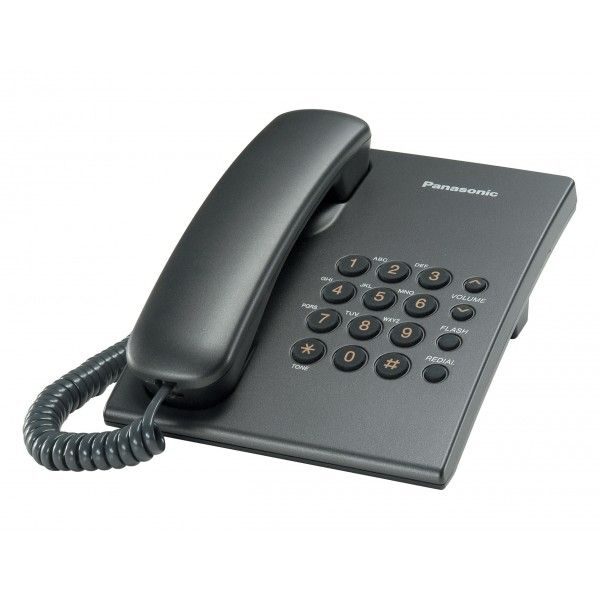Content
- Adjusting Journal Entries And Accrual Accounting
- How To Create A Prepaid Expenses Journal Entry
- The Difference Between Accrued Expenses And Accounts Payable
- Accounting
- Get Legal Help For Any Legal Need From People In Business
- How To Make Adjusting Entries
- Where Do Adjusting Journal Entries Fit Into The Financial Close Process?
The company will use this car to generate revenues in future periods. Thus, the cost and expense of this car should be recognized in future periods when the income is earned. Adjusting journal entries are made to update the accounts and bring them to their correct balances. If a company ships good on credit, but didn’t process the sales invoice as of the end of the accounting period.
When evaluating offers, please review the financial institution’s Terms and Conditions. If you find discrepancies with your credit score or information from your credit report, please contact TransUnion® directly. If each entry above had been posted as of Dec. 31, your December expenses would have been increased by $19,950. Using the above payroll example, let’s say as of Dec. 31 your employees had earned wages totaling $8,750 for the period from Dec. 15 through Dec. 31. They didn’t receive these wages until Jan. 1, because you pay your employees on the 1st and 15th of each month. Time period assumption – An assumption that accountants can divide the economic life of a business into artificial time periods. Calendar year – An accounting period that extends from January 1 to December 31.
- Since all interested parties remain eager to know various information, financial statements i.e. income statement and balance sheet are to be prepared in every accounting period.
- Prepaid expenses only turn into expenses when you actually use them.
- Adjusting journal entries are used to adjust the financial statements and bring them into compliance with relevant accounting standards, such as GAAP or IFRS.
- Under cash basis accounting process income is recognized when it is received in cash and expenses are also recognized when these are paid in cash.
- So, your income and expenses won’t match up, and you won’t be able to accurately track revenue.
These adjusting entries record non-cash items such as depreciation expense, allowance for doubtful debts etc. Similarly, under this system expenditure, incurred in a particular accounting period, are recognized as expenditure whether cash paid for these or not in that particular period. If all accrued income; and expenses incurred are not shown in the income statement, Certified Public Accountant it becomes incomplete, incorrect and confusing. The economic activities, incurred but not identified by the accountant as business transactions are omitted from journal entries. Bench gives you a dedicated bookkeeper supported by a team of knowledgeable small business experts. We’re here to take the guesswork out of running your own business—for good.
Imagine there is a company called XYZ Company that took out a loan from a bank on December 1, 2017. The first interest payment is to be made on June 30, 2018, and the company is preparing its financial statements for the year ending December 31, 2017. Learn accounting fundamentals and how to read financial statements with CFI’s free online accounting classes. When a long-term asset is purchased, it should be capitalized instead of being expensed in the accounting period it is purchased in. For that reason the accountants follow two generally accepted accounting principles viz – revenue recognition principles and matching principles. Comparatively small organizations, educational institutions, and professionals such as physicians, lawyers, and accountants keep accounts of all their income and expenditures on a cash basis.
Every transaction in your bookkeeping consists of a debit and a credit. Debits and credits must be kept in balance in order for your books to be accurate. For example, when you enter a check in your accounting software, you likely complete a form on your computer screen that looks similar to a check. Behind the scenes, though, your software is debiting the expense account you use on the check and crediting your checking account. Prepaid expenses – Expenses paid in cash that benefit more than one accounting period and that are recorded as assets. The primary purpose of adjusting entries is to update account balances to conform with the accrual concept of accounting.
As adjusting entries require application of accounting principles, human intervention may be required in an automated accounting system. Closing entries are entries made to close temporary ledger accounts and ultimately transfer their balances to permanent accounts. For tax purposes, your tax preparer might fully expense the purchase of a fixed asset when you purchase it. However, for management purposes, you don’t fully use the asset at the time of purchase. Instead, it is used up over time, and this use is recorded as a depreciation or amortization expense. At the end of the following year, then, your Insurance Expense account on your profit and loss statement will show $1,200, and your Prepaid Expenses account on your balance sheet will be at $0. That’s because form-based accounting software posts the journal entries for you based on the information entered into the form.
Adjusting Journal Entries And Accrual Accounting
Closing entries most often can be passed automatically by the automated accounting system without the need for much human involvement. Closing entries are more mechanical and simpler as they only involve arithmetical calculation and transferring of year end balance. Online lenders offer business lines of credit up to $250,000 for short-term financing needs. Compare online loan options for funding and growing your small business. Because you know your inventory amount has decreased by $3,750, you will adjust your actual inventory number instead of posting to the reserve account. Depreciation and amortization is the most common accounting adjustment for small businesses. Now, when you record your payroll for Jan. 1, your Wages and Salaries expense won’t be overstated.
The revenue recognition principle is the basis of making adjusting entries that pertain to unearned and accrued revenues under accrual-basis accounting. They are sometimes QuickBooks called Balance Day adjustments because they are made on balance day. In summary, adjusting journal entries are most commonly accruals, deferrals, and estimates.
How To Create A Prepaid Expenses Journal Entry
Your bookkeeping team imports bank statements, categorizes transactions, and prepares financial statements every month. AccountDebitCreditPrepaid rent expense$12,000Cash$12,000Then, come January, you want to record your rent expense for the month. You’ll move January’s portion of the prepaid rent from an asset to an expense. In December, you record it as prepaid rent expense, debited from an expense account. In February, you record the money you’ll need to pay the contractor as an accrued expense, debiting your labor expenses account. When you generate revenue in one accounting period, but don’t recognize it until a later period, you need to make an accrued revenue adjustment. If you do your own accounting and you use the cash basis system, you likely won’t need to make adjusting entries.
These journal entries should include supporting documentation, links to applicable policies and procedures, and be properly reviewed and approved before being posted. Closing entries are accounting entries passed to transfer balances of individual temporary ledger accounts to relevant permanent accounts. Temporary accounts are income and expense accounts that are created during the accounting period and closed at the end.
The Difference Between Accrued Expenses And Accounts Payable
Sometimes an accounting entry is also known as ‘balance day adjustments’. A company usually has a standard set of potential adjusting entries, for which it should evaluate the need at the end of every accounting period. Also, consider constructing a journal entry template for each adjusting entry in the accounting software, so there is no need to reconstruct them every month. The standard adjusting entries used should be reevaluated from time to time, in case adjustments are needed to reflect changes in the underlying business. At a later time, adjusting entries are made to record the associated revenue and expense recognition, or cash payment. A set of accrual or deferral journal entries with the corresponding adjusting entry provides a complete picture of the transaction and its cash settlement.
Under cash basis accounting process income is recognized when it is received in cash and expenses are also recognized when these are paid in cash. For example, going back to the example above, say your customer called after getting the bill and asked for a 5% discount. If you granted the discount, you could post an adjusting journal entry to adjusting entry definition reduce accounts receivable and revenue by $250 (5% of $5,000). The balance in the prepaid rent account was $10,000 at the beginning of the period. A company provided services to a customer on the last day of the year but did not have time to prepare an invoice to send. Supplies on hand at the beginning of the accounting period were $5,000.
Access our Complete Monthly Close Checklist to use when closing your company’s or your client’s monthly books. Reconciliation is an accounting process that compares two sets of records to check that figures are correct, and can be used for personal or business reconciliations. The completed contract method enables a company to postpone recognizing revenue and expenses until a contract is completed. Bad debt is an expense that a business incurs once the repayment of credit previously extended to a customer is estimated to be uncollectible.
Accounting
We’ll do one month of your bookkeeping and prepare a set of financial statements for you to keep. The way you record depreciation on the books depends heavily on which depreciation method you use. Considering the amount of cash and tax liability on the line, it’s smart to consult with your accountant before recording any depreciation on the books. To get started, though, check out our guide to small business depreciation.
Get Legal Help For Any Legal Need From People In Business
BlackLine Journal Entry automates the process for creating and managing adjusting journal entries. It provides an integrated system for the creation, review, approval, and posting of adjusting journal entries. Journal entry templates ensure standardization across the organization, and validation rules check entries for errors before posting. Adjusting entries are typically made after the trial balance has been prepared and reviewed by your accountant or bookkeeper. The Inventory Loss account could either be a sub-account of cost of goods sold, or you could list it as an operating expense. We prefer to see it as an operating expense so it doesn’t skew your gross profit margin. The Reserve for Inventory Loss account is a contra asset account, and it shows up under your Inventory asset account on your balance sheet as a negative number.
Remember, the matching principle indicates that expenses have to be matched with revenues as long as it is reasonable to do so. Adjusting journal entries are accounting journal entries that update the accounts at the end of an accounting period. Each entry impacts at least one income statement account and one balance sheet account (an asset-liability account) but never impacts cash. There are generally two types of adjusting journal entries done during the period. First, an adjusting entry can be an entry made at the end of a period. These adjusting entries record an unrecognized revenue or expense occurred during the current period, but concluded in the next or another period. Perform these correcting entries when you find a mistake in the financials.
How To Make Adjusting Entries
Unearned revenues refer to payments for goods to be delivered in the future or services to be performed. During the month which you made the purchase, the company would make an adjusting entry debiting unearned revenue and crediting revenue. Adjusting journal entries are used to adjust the financial statements and bring them into compliance with relevant accounting standards, such as GAAP or IFRS. This activity is routinely performed by accountants to allocate income and expenses to the actual period in which the income or expense occurred or earned—a feature of accrual accounting.
As shown in the preceding list, adjusting entries are most commonly of three types. The first is the accrual entry, which is used to record a revenue or expense that has not yet been recorded through a standard accounting transaction. The second is the deferral entry, which is used to defer a revenue or expense that has been recorded, but which has not yet been earned or used. The final type is the estimate, which is used to estimate the retained earnings amount of a reserve, such as the allowance for doubtful accounts or the inventory obsolescence reserve. Adjusting entries for prepayments are necessary to account for cash that has been received prior to delivery of goods or completion of services. The balance in the unearned revenue account was $5,000 at the beginning of the accounting period. To create your first journal entry for prepaid expenses, debit your Prepaid Expense account.
At year-end, half of December’s wages have not yet paid; they will be paid on the 1st of January. If you keep your books on a true accrual basis, you would need to make an adjusting entry for these wages dated Dec. 31 and then reverse it on Jan. 1. Most accruals will be posted automatically in the course of your accrual basis accounting. However, there are times — like when you have made a sale but haven’t billed for it yet at the end of the accounting period — when you would need to make an accrual entry. If you have adjusting entries that need to be made to your financial statements before closing your books for the year, does that mean your books aren’t as accurate as you thought? This article will take a close look at adjusting entries for accounting purposes, how they are made, what they affect and how to minimize their impact on your financial statements. Adjusting entries are given at the end of a certain accounting period.
When revenues are earned but not yet recorded at the end of the accounting period because an invoice has not yet been issued, nor has cash payment been received. Determining the amount of income and expenses, as shown in the financial statements of a particular accounting period, is a Very complicated task.







-600x600.png)


















